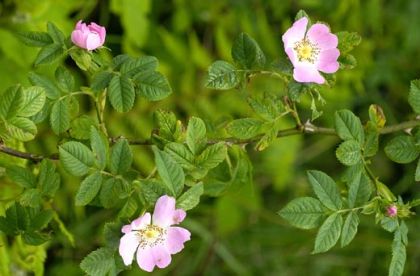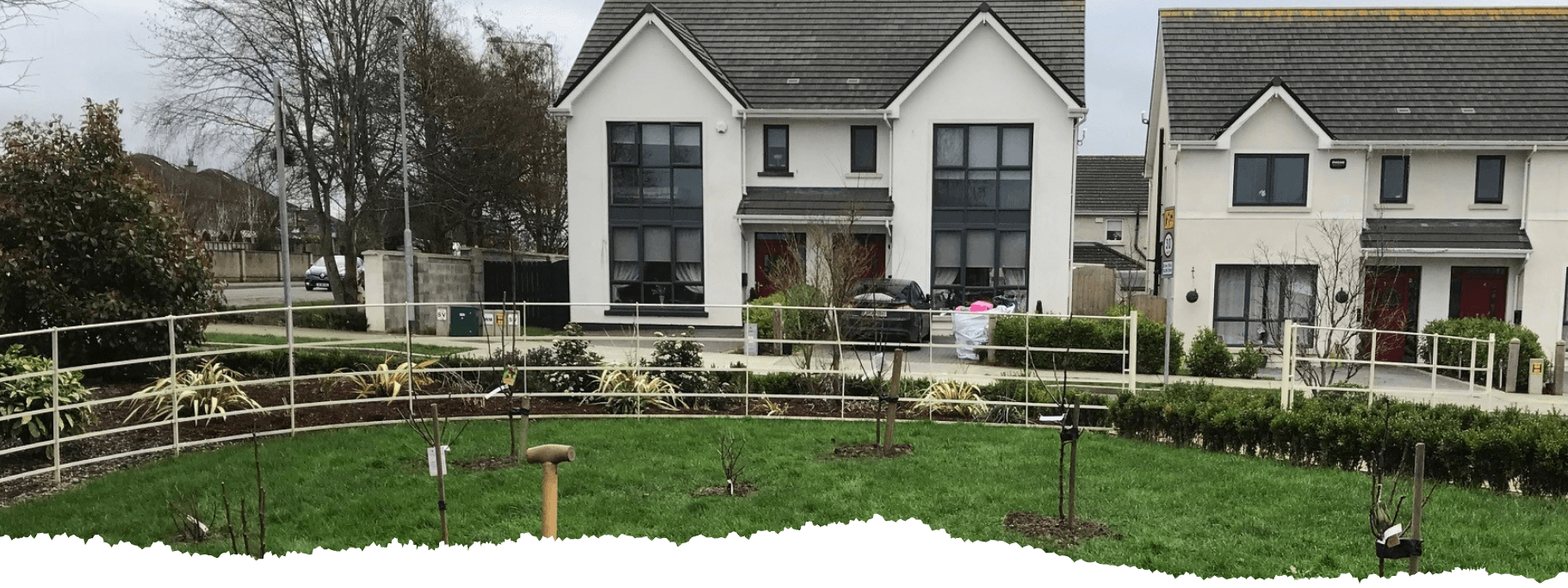What are we planting
In winter 2022/23 we have planted total of 2656 native trees and 60 fruit trees.
18 different species of native and close to native trees list:
- Hawthorn
- Hazel
- Crabapple
- Wild cherry
- Willow
- Spindle
- Dog rose
- Holly
- Mountain ash
- Oak
- Birch
- Alder
- Serviceberry
- Rowan
- Scots pine
- Privet
- Elder
- Beech
Fruit Trees: Apple, Pear and plum.

More on our trees*
In pre-Christian Irish society, brehons or judges laid down the law. This early body of law is now recognised as probably the oldest known European example of a sophisticated legal system. The Brehon laws were originally composed in poetic verse and memorised by the Brehons. As time went by, these laws were written down by Christian scholars. Brehon law was the law of a pastoral people, whose economics were based on a self-sufficient agricultural economy regulated by tribal and family relationships and where wealth was measured in terms of cattle ownership. There were no units of money and barter was the main form of exchange. In this world, trees played a vital role and as a result there were laws in place to protect them.
There were four classes of tree, roughly mirroring classes in early Irish society. These were the airig fedo (‘nobles of the wood’), the aithig fedo (‘commoners of the wood’), the fodla fedo (‘lower divisions of the wood’) and the losa fedo (‘bushes of the wood’). Which group a tree belonged to depended on its economic importance, usually related to its fruit, timber or size when fully grown.
The díre or penalty for an offence was a fine in the form of livestock. The penalties were graded according to the class of tree harmed and the form of damage inflicted. The díre for felling one of the nobles of the wood was two and a half milk cows, while the penalty for cutting down one of the commoners of the wood was one milk cow, and so on. This Old Irish Tree-List, as it has come to be known, not only provides a fascinating example of Brehon law in action, but gives some insight into the nature of ancient Irish society and the role and importance of trees in the daily lives of our ancestors.
In our Elder Project, of the 28 trees in the Old Irish Tree-List, we have been able to include over half of these types, connecting ourselves back to our past. These included:
With thanks to the following sources:
https://www.forestryfocus.ie/social-environmental-aspects/cultural-heritage/trees-and-folklore/brehon-laws/
“Trees in early Ireland” – Fergus Kelly
https://www.forestryfocus.ie/wp-content/uploads/2013/02/Trees-in-Early-Ireland.pdf“
Airig Fedo (Nobles)
Dair/Oak
The value of the oak is said to derive from “its acorns and its use for woodwork”. There are many references in our sources to the importance of the acorn-crop (mes), particularly in relation to the fattening of pigs. A later legal commentator claims that a single oak can provide enough acorns to fatten one pig in a good year while the sturdiest type of fencing is the dair-imbe ‘oak-fence’.
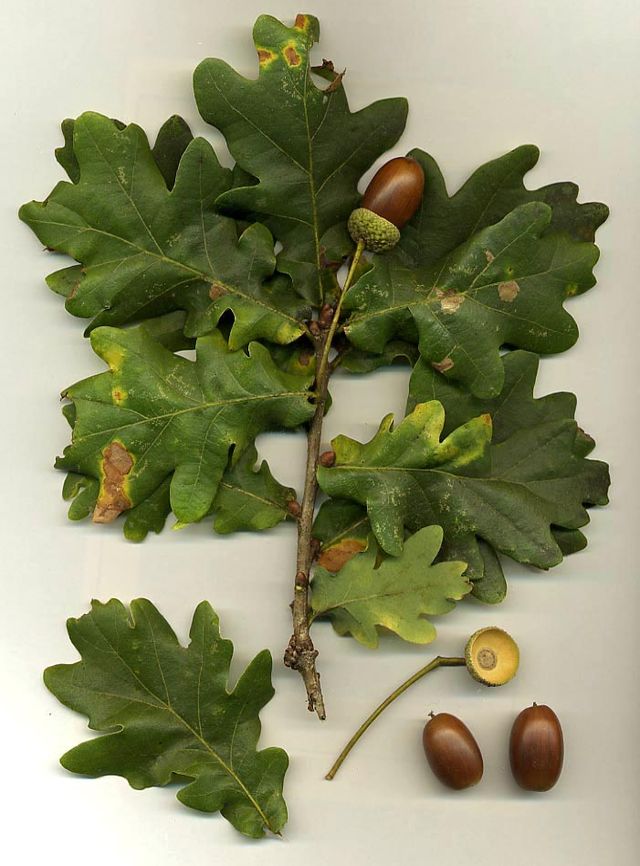
Coll/Hazel
In spite of its small size, the hazel is another ‘lord of the wood’ and has been described as briugufeda “the hospitaller (food-provider) of the wood. This is because of hazel-nuts, which were an important element in the early Irish diet. That they could be stored made them a particularly important foodstuff during the generally lean and hungry winters endured by the early Irish.
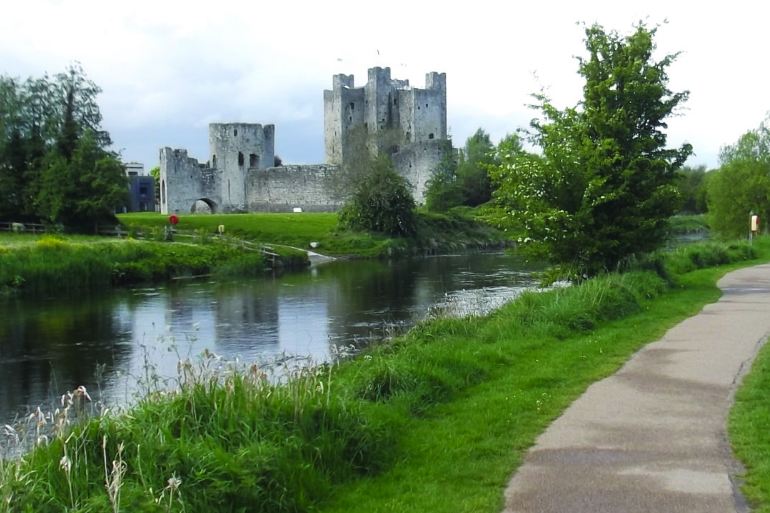
Cuileann/Holly
As well as been a winter-fodder for livestock, holly was an important tree to the early Irish as it was thought to be used in manufacture of chariot shafts. Concealed spikes for trapping deer were also thought to have been made from holly.

Ochthach/Scots pine
The importance of Scots pine comes primarily from its pine-resin, which was used to make pitch for caulking boats, preserving wood, etc. There are also references in old books to the use of pine-beams in house-building and even in the mast of a ship.
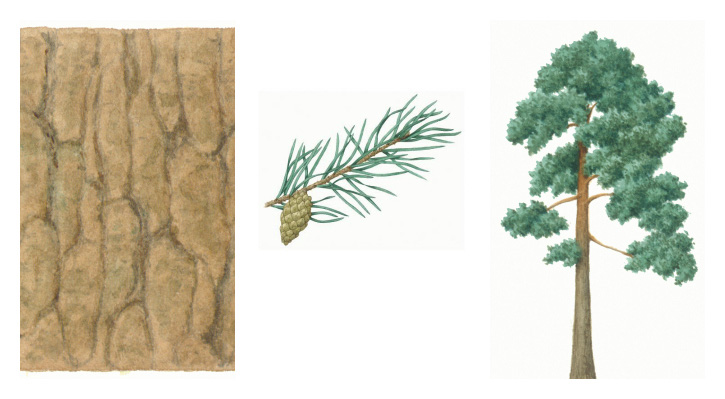
Aball/Crab Apple
The inclusion of this tree among the lords of the wood is due to its fruit and its bark with the small sour fruit of the wild apple something that was valued by the early Irish during the late autumn and winter.

Aithig Fedo (Commoners)
Fern/Alder
Alder wood was important in the manufacture of shields, masts and tent-poles.
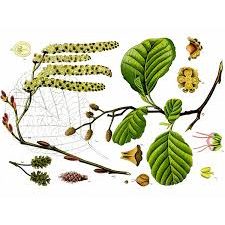
Sail/Willow
Because of its lightness willow is quite often mentioned in the context of housebuilding. This might seem strange but because, early Irish dwelling-houses would have been impermanent structures, there would not have been a need to use more durable timber.

Scé/Hawthorn
While hawthorn is often associated with the supernatural, in the earliest Irish texts there were other trees considered more associated with the supernatural. Of importance, the haws (scechora) were considered a wild fruit of minor economic importance. In spite of their dull taste they were of use as a source of nourishment in times of hunger.
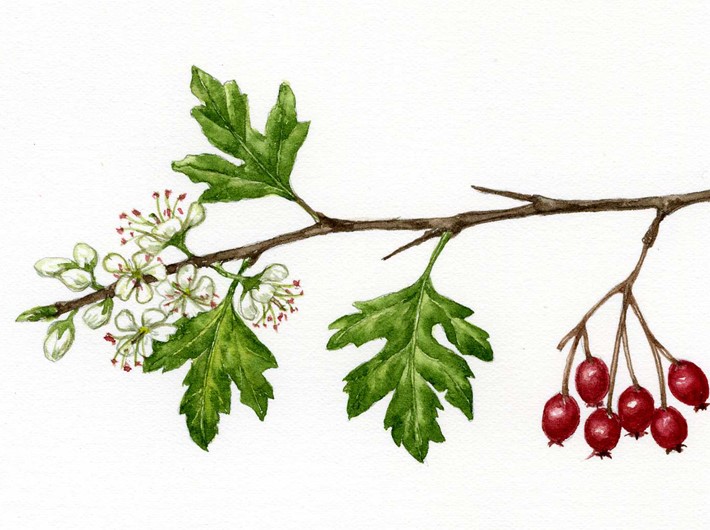
Caorthann/Rowan
The practical uses of the rowan are limited but did include the manufacture of spits for roasting meat while its berries (caera) were also of minor economic value as food.
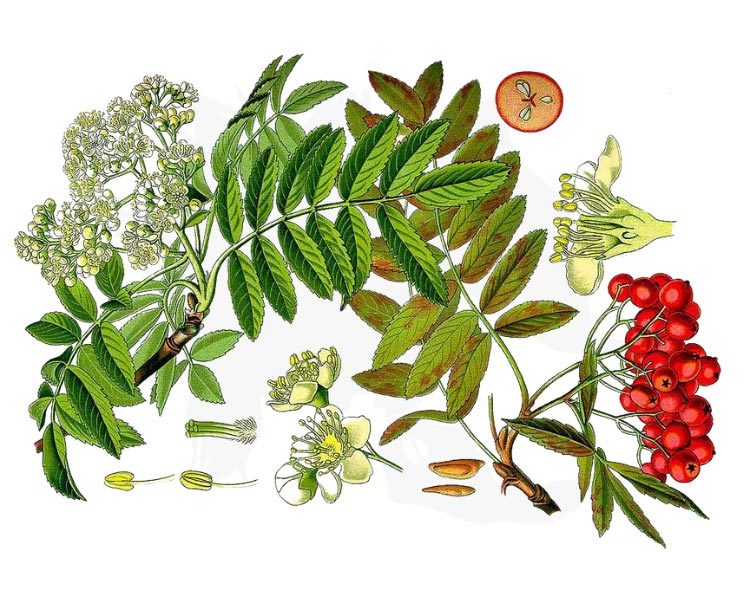
Beithe/Birch
Like rowan, the beauty of the birch-tree is frequently celebrated in early Irish verse, but the relatively poor quality of its timber means it was of only secondary economic importance.
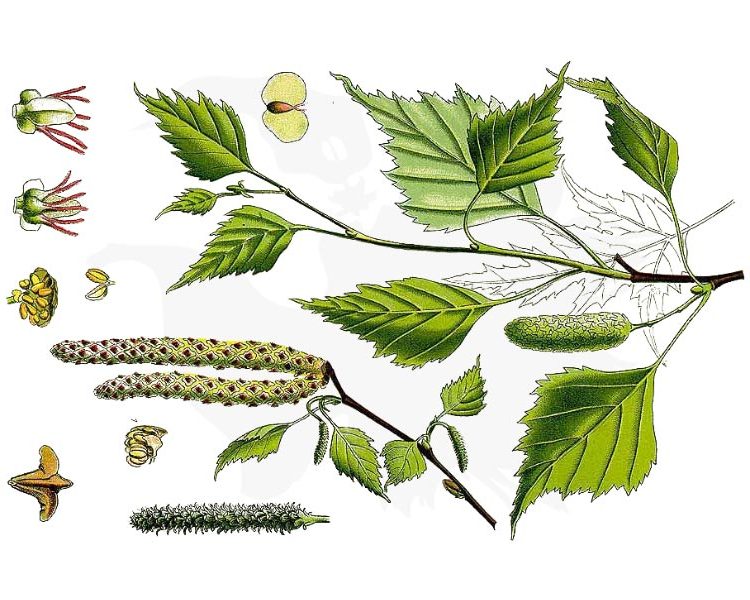
Idath/Cherry
Wild cherries were also of limited economic value as food.
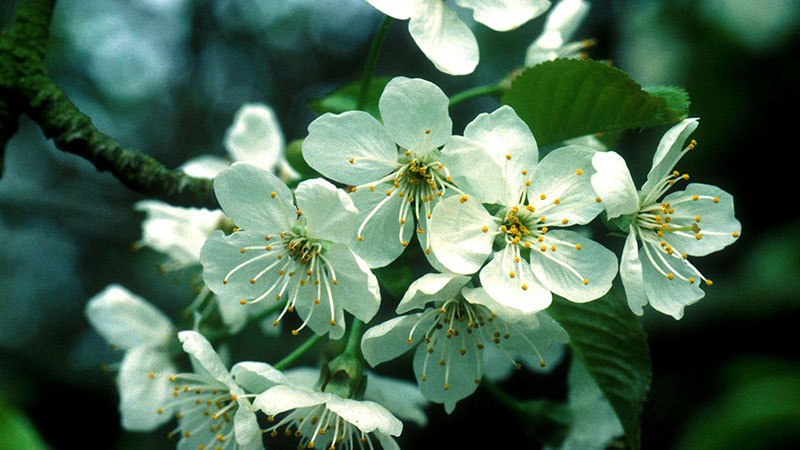
Fodla Fedo – (Lower Divisions)
Feoras/Spindle
The main use of this widespread small tree seems to have been in the manufacture of spindles.

Findcholl/Whitebeam
Though not held as a particularly important tree, the wood of the whitebeam is tough, heavy, springy and not liable to split. It would therefore make a formidable fighting cudgel.
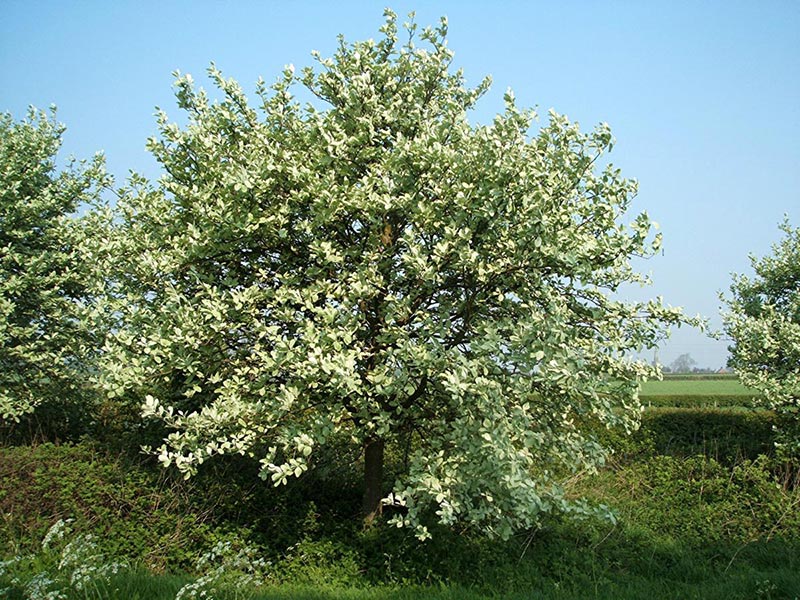
Trom/Elder
While the cooked berries of the elderberry can be edible, the uncooked berries and other parts of plants are poisonous. With limited nutritional value (at least to humans, though not birds) and considered a poor quality soft-wood the elder was not considered an important tree and was often associated with abandoned sites with one ninth-century text stating “three signs of a cursed place: elder, corncrake, nettle”!
Despite not being the jewel of trees to the Old Irish, with the Irish name for Trim, Baile Átha Troim originating as “town on the ford of the elder-flower” this tree occupies a special place in our hearts.
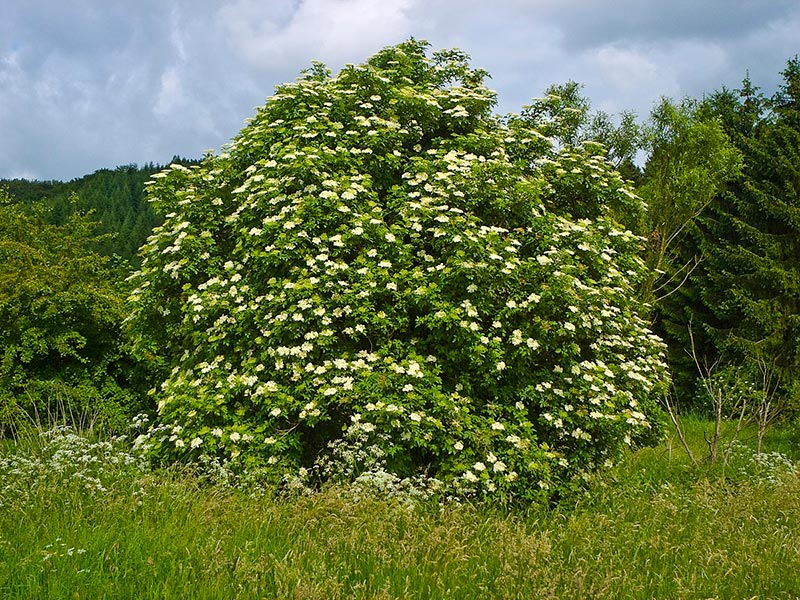
Losa Fedo (Bushes)
While the Losa Fedo were the least valuable of the twenty-eight trees and shrubs the penalty-fine for damage to one was still a sheep!
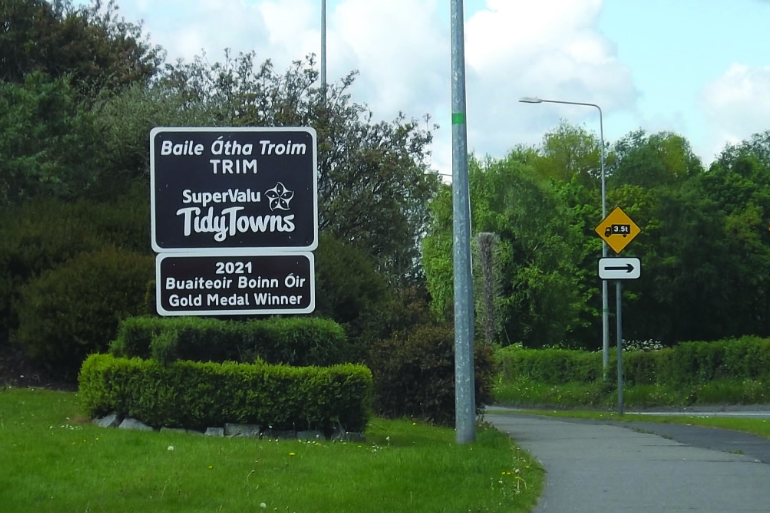
Spín/Wild Rose
Wild rose were no doubt valued mainly for its fruit.
With thanks to the following sources:
https://www.forestryfocus.ie/social-environmental-aspects/cultural-heritage/trees-and-folklore/brehon-laws/
“Trees in early Ireland” – Fergus Kelly
https://www.forestryfocus.ie/wp-content/uploads/2013/02/Trees-in-Early-Ireland.pdf“
